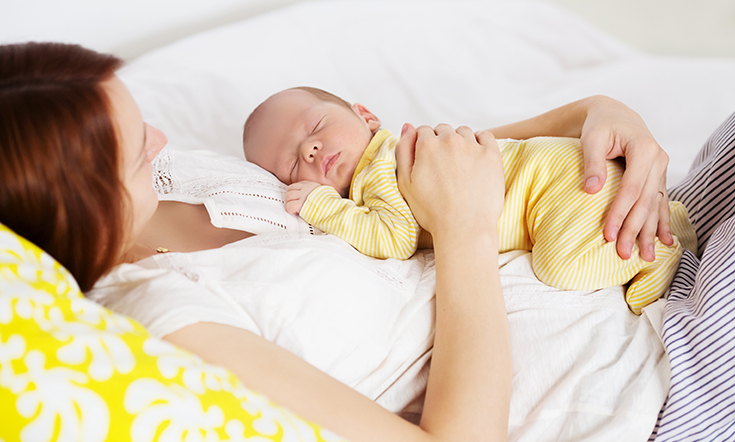

Like adults, a baby has natural sleep cycles. They differ slightly from adult sleep cycles in that, the order of the cycles are different and the cycles are shorter.
A baby’s sleep cycle begins with a drowsy phase, followed by a sleep phase known as Rapid Eye Movement (REM). Also known as the active, dream or light sleep phase, your baby’s brain is busy, and is driving the movement of their body. As babies grow, the initial REM phase becomes shorter and eventually fades. This is when a baby’s sleep cycle starts to look more like an adult sleep cycle, although still remains shorter.
Is Your Baby in REM Sleep?
REM sleep is determined by your baby’s movements. In REM your baby will be physically active, so you will detect their eyes moving under closed lids, or their eyelids fluttering. Their arms and legs may twitch, and their mouths may move (sometimes you will see a sucking motion). They may smile, chuckle, whimper or cry out in their sleep, and breathing can be erratic (which can be alarming for a parent looking on, but is completely normal).
When babies are in the REM phase of sleep, parents may think their baby is waking up, but in fact their brain waves remain in sleep mode, so resist the temptation to pick them up. REM is a lighter phase of consciousness and babies can wake more readily from this phase than from the deep, quiet, non-REM sleep.
It’s worth considering where they are in their sleep cycle if you plan to move your sleeping baby from the car seat or pram, or from your arms to their cot. If you can see they are in active REM sleep, it is worth waiting five or 10 minutes until they have reached the non-REM phase of the sleep cycle. Once they are lying very still, they will have moved out of active REM sleep.
Non-REM sleep, also known as deep or quiet sleep, is recognisable though your baby lying very still, their breathing is slow and regular, their skin looks paler than usual. Babies switch between REM sleep and non-REM sleep in almost equal amounts, each type of cycle make up around 40-50 per cent of the baby’s total sleep cycle.
However, the exception to this rule is when a baby is born early. Preterm babies, from 25 weeks of age, spend their entire sleep time in REM sleep.
Changes in Baby Sleep Cycles As They Grow
In the first few weeks of life you will see that sleep cycles average around 20-30 minutes. As your baby grows the length of a sleep cycle extends, so by around 12 months of age a sleep cycle lasts about 45-60 minutes. By adulthood the sleep cycle is around 90 minutes long.
Do Babies Dream?
We don’t know if babies dream or not. If they do dream, it is in the REM phase when the brain is active, much like adults.Research has shown which areas of the brain are activated while sleeping. Even though it is evident that different areas have greater blood supply and electrical activity, we cannot be 100 per cent certain that the baby is actually dreaming.

The range of brain activities that occur during REM sleep support the notion that babies do cognitively process information during the REM phase of sleep. Exactly what babies experience during REM remains unclear, but by watching babies during REM they have been seen opening their mouths, as if waiting for food during a phase of their development when they were learning about solids. As well as chuckling and talking when they are finding their voice.
There is no definitive answer to whether babies dream or not, but you can be certain there is activity occurring in the brain during the active phase of sleep.
If you are having trouble with your baby sleeping and need Expert help see link























